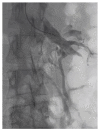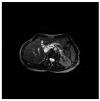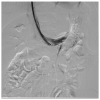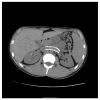From Nutcracker Phenomenon to Nutcracker Syndrome: A Pictorial Review
- PMID: 33440614
- PMCID: PMC7826835
- DOI: 10.3390/diagnostics11010101
From Nutcracker Phenomenon to Nutcracker Syndrome: A Pictorial Review
Abstract
Left renal vein (LRV) entrapment, also known as nutcracker phenomenon if it is asymptomatic, is characterized by abnormality of outflow from the LRV into the inferior vena cava (IVC) due to extrinsic LRV compression, often accompanied by demonstrable lateral (hilar) dilatation and medial (mesoaortic) stenosis. Nutcracker syndrome, on the other hand, includes a well-defined set of symptoms, and the severity of these clinical manifestations is related to the severity of anatomic and hemodynamic findings. With the aim of providing practical guidance for nephrologists and radiologists, we performed a review of the literature through the PubMed database, and we commented on the definition, the main clinical features, and imaging pattern of this syndrome; we also researched the main therapeutic approaches validated in the literature. Finally, from the electronic database of our institute, we have selected some characteristic cases and we have commented on the imaging pattern of this disease.
Keywords: CT; ECD; nutcracker phenomenon; nutcracker syndrome; renal; renovascular hypertension.
Conflict of interest statement
The authors declare no conflict of interest.
Figures














References
Publication types
LinkOut - more resources
Full Text Sources
Other Literature Sources

